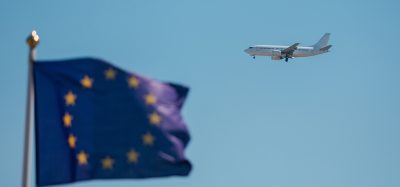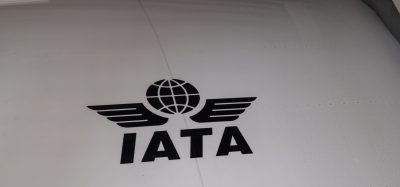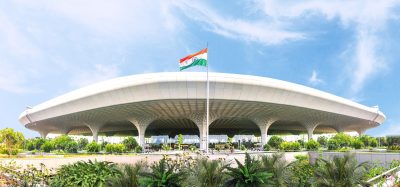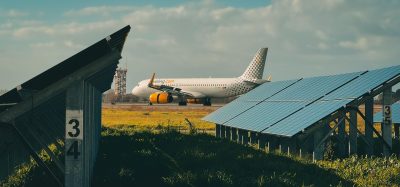HKIA becomes first airport in Asia-Pacific to achieve Airport Carbon Accreditation “Optimisation” level
- Like
- Digg
- Del
- Tumblr
- VKontakte
- Buffer
- Love This
- Odnoklassniki
- Meneame
- Blogger
- Amazon
- Yahoo Mail
- Gmail
- AOL
- Newsvine
- HackerNews
- Evernote
- MySpace
- Mail.ru
- Viadeo
- Line
- Comments
- Yummly
- SMS
- Viber
- Telegram
- Subscribe
- Skype
- Facebook Messenger
- Kakao
- LiveJournal
- Yammer
- Edgar
- Fintel
- Mix
- Instapaper
- Copy Link
Posted: 22 March 2013 | Hong Kong International Airport (HKIA) | No comments yet
Airport recognised for its carbon emissions management and reduction efforts…


Hong Kong International Airport (HKIA) received a significant recognition of its environmental efforts today when Airports Council International (ACI) presented it with the Airport Carbon Accreditation “Optimisation” certificate – the second-highest level of accreditation in the programme – for its management and reduction of carbon emissions. HKIA is the first and only airport in Asia-Pacific to achieve this standard.
HKIA also announced that according to preliminary and unaudited figures, the airport community has achieved a carbon intensity reduction of nearly 14% over the past two years. The result puts HKIA on track to meet the goal it set in 2010 of lowering the airport’s carbon intensity by 25% by 2015 compared to 2008 emission levels.
Airport Carbon Accreditation was initially launched by ACI Europe in June 2009 and expanded to Asia-Pacific in November 2011. It is the only institutionally endorsed carbon management certification standard for airports. The programme independently assesses the efforts of airports with four progressive levels of accreditation, including “Mapping”, “Reduction”, “Optimisation” and “Neutrality”. To achieve “Optimisation”, or level 3, an airport must show that it has mapped and reduced its carbon emissions and has also engaged stakeholders – including airlines, caterers, ground handlers and others – to reduce their carbon footprints.
At today’s ceremony, Patti Chau, Regional Director of ACI Asia-Pacific, presented Dr Marvin Cheung Kin-tung, Chairman of Airport Authority Hong Kong (AAHK), with a certificate confirming HKIA’s accomplishment under the programme.
The ceremony was officiated by Professor Anthony Cheung Bing-leung, Secretary for Transport and Housing, Dr Marvin Cheung and Stanley Hui Hon-chung, Chief Executive Officer of AAHK. Representatives from three green groups, including Professor Stephen Wong, Chairman of Clean Air Network, Dr Man Chi-sum, Chief Executive Officer of Green Power, and Adam Koo, Chief Executive Officer of WWF-Hong Kong, also attended the ceremony together with more than 40 business partners.
During the ceremony Dr Cheung extended his gratitude to the airport’s business partners for their joint efforts to reduce the carbon intensity of HKIA’s day-to-day operations and development. “This accreditation is an important milestone as we pursue environmental excellence and a sustainable future. We hope that the experience we have gained to date will help HKIA continue to be a pioneer in environmental performance around the world.”
Professor Cheung said, “Environmental protection has always been an integral aspect of HKIA’s development, and this is also one of the policy priorities of the new Government, so it is rewarding to see the airport become a pioneer in the Asia-Pacific region and an exemplar of environmental excellence. The airport community has demonstrated how businesses can come together to tackle environmental challenges through carefully planned initiatives and joint effort.”
Ms Chau said, “As the association representing airports worldwide, the Airports Council International is pleased to welcome the first Asia-Pacific airport to attain Airport Carbon Accreditation Optimisation Level. This not only demonstrated AAHK’s strong commitment in environmental protection and ensuring sustainable growth but also its leadership in motivating the whole airport community to fulfil this meaningful deed.”
Since 2008 HKIA has conducted carbon audits covering facilities on the airport island. In 2010 the airport community set a goal of lowering HKIA’s carbon intensity by 25% by 2015 compared to 2008 emission levels. In 2012 it took an even more significant step forward by pledging to operate the greenest airport in the world, the first commitment of its kind worldwide. The airport community has completed more than 370 green measures in pursuit of these goals.
In 2011 AAHK began an annual review of HKIA’s environmental performance, setting new targets under a rolling three-year plan that adheres to the “three Rs” of Reduce, Reuse and Recycle. AAHK is currently conducting the city’s largest LED replacement project, which involves switching the airport’s traditional lighting in passenger terminal buildings with 100,000 LEDs by 2014. It is estimated this will save approximately 15 million kWh of electricity and reduce nearly 9,000 tonnes of carbon emissions per year. AAHK also possesses the largest fleet of electric saloon vehicles in Hong Kong.
AAHK continues to devise and implement innovative programmes with its business partners. Other plans of note include banning the use of aircraft Auxiliary Power Units when at parking stands in 2014; having an all-electric saloon fleet in the Airport Restricted Area by 2017; installing over 150 charging points for electric vehicles and ground service equipment; and replacing 26 diesel vehicles with Euro V vehicles.
To offset the carbon emissions generated by the event, AAHK worked with Carboncare Asia to support the afforestation and reforestation projects on degraded lands in Northwest Sichuan.


















